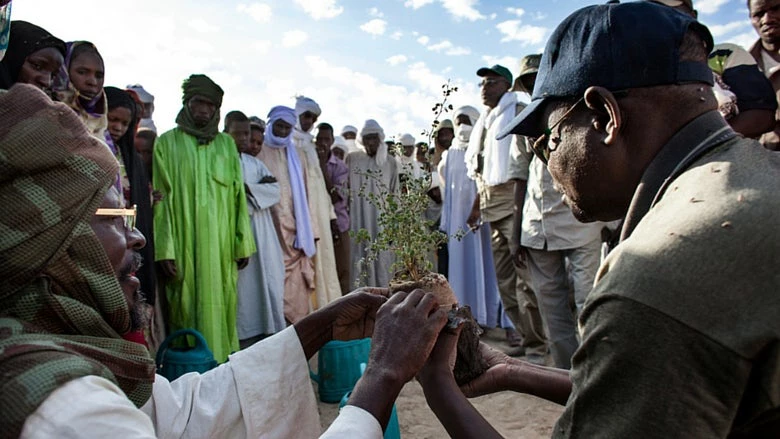
Halfway through the year, Paula Caballero, Environment and Natural Resources Global Practice Senior Director at the World Bank, wrote that 2015 would be the year the world was going to connect the dots for sustainable development. And girl, was she right!
2015 indeed became the “year in which the health of the planet [was] finally understood to be of central concern to the future of people.” Even Pope Francis brought the topic to the forefront by dedicating an encyclical on care for our common home.
So it’s especially timely that the Bank is supporting inclusive green growth around the world, in countries like Morocco, whose vision of green growth is based on better management of natural resources to generate more jobs, value and wellbeing from existing assets.
Addressing pollution was also a major priority. When you read that poor air quality is a leading cause of death worldwide, claiming the lives of more than 7 million people, 90 percent of whom live in low- and middle-income countries, you appreciate the importance of the planet’s health. So in 2015, the Bank plunged deep into understanding the economic and health burden related to environmental degradation.
We published the Little Green Data Book 2015 (LGDB), which painted a striking picture of pollution in countries such as Nigeria. The World Bank established a Pollution Management and Environmental Health (PMEH) program to help countries respond to pollution challenges that are solvable in the near term so as to save lives and unlock economic opportunity. We also looked at stories from Santiago to Bangkok that show how cleaner air brings healthier lives and collaborated with partners to bring the world together at a rally to #EndPollution.
As we look back, 2015 was also the year “in which the management of natural resources – from fish stocks and fresh water, to fertile soil, forest habitats and the carbon in the atmosphere - was understood to have significant national, international and inter-generational consequences,” as Caballero wrote in May. In September, at the UN Sustainable Development Summit, it all came together as countries adopted a new sustainable development agenda. For the first time, the international-development agenda included a goal for oceans, illustrating the ambitious and holistic view of challenges and solutions that nations are embracing.
Well aware that there is no planet B, the World Bank advanced its commitment to helping coastal and island countries turn the tide in their favor with a pipeline of sustainable investments that protect and enhance natural capital. When about 1 billion people in developing countries rely on seafood as a primary source of animal protein, and millions of jobs are linked to fisheries, it’s easy to see that the health of our oceans is crucial to our collective future. This year, we wrote on how fishing, a vital industry in Africa, contributes both to livelihoods and food security; how oceans are helping the Sultanate of Oman diversify its economy beyond oil; and how good governance, ecotourism and private sector investment are seen as steps that could transform livelihoods and develop Zanzibar’s fisheries sector in the near future.
In the months before history was made at COP21, Caballero wrote “Many of the solutions however will require breaking down the walls of specific sectors – forestry, agriculture, energy, transport, health – and working with a variety of stakeholders across landscapes, seascapes and cities to achieve multiple goals at once.”
2015 saw a particularly strong focus on working across sectors at the landscape level. Before COP21, over 180 countries submitted Intended Nationally Determined Contributions – or INDCs – to the UN Framework Convention on Climate Change (UNFCCC). The INDCs describe what each country plans to do to reduce emissions and adapt to climate change. Many, if not most, include a reference to the role that landscape restoration and forests have for their adaptation and mitigation strategies. And they are on to something. On our road to COP21, we shared stories that showed that trees are not just for tree huggers and explained the role that protected areas play in countries like Madagascar, where they support the country’s ability to grow food and withstand extreme weather conditions. From the TerrAfrica partnership, we discovered how sustained efforts can bring together different sectors, faiths, countries and partners to build the resilience of land and livelihoods in a changing climate.
In the face of climate change, concerns that were previously considered marginal, such as oceans, forests and biodiversity, are getting attention because in 2015 the world began to connect the dots and realize that good environmental stewardship supports livelihoods, leads to better health, and makes development sustainable and inclusive, especially for the world’s poorest people.
So what do you think 2016 will stand for? Share your comments, plans, resolutions and expectations below.


Join the Conversation